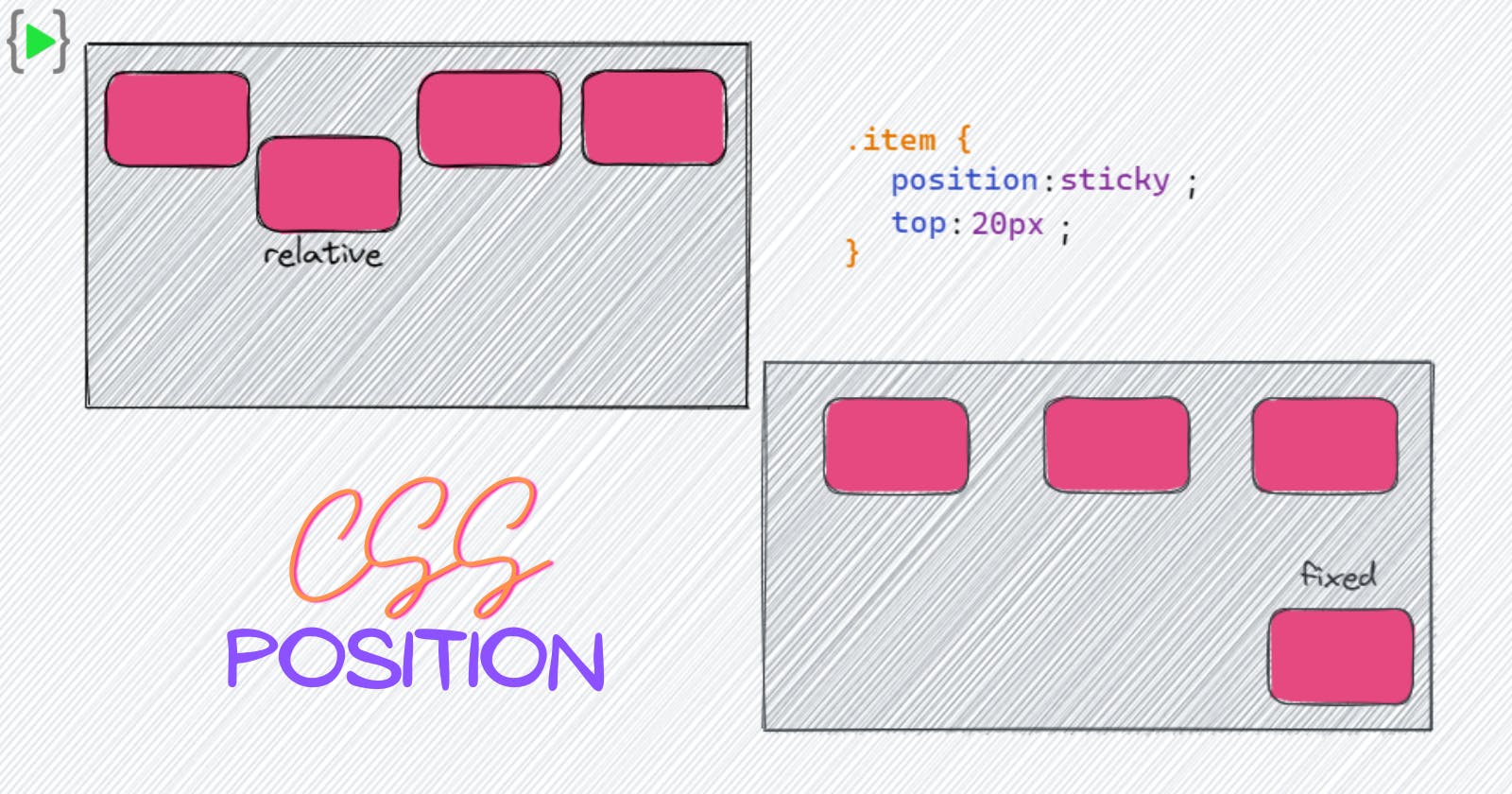CSS Position Property
The CSS Positions property defines how the element is positioned in the document. We can set different values for position property and then manipulate the position by using the top, right, bottom and left properties. The position property has six values - static, relative, absolute, fixed, sticky and inherit. Here is the basic syntax to write position property -
.item {
position: relative;
top: 200px;
left: 400px;
}
Now, I will explain all the six values of position property -
Static
It is the default value of the position property and every element in the the document has the static position by default. The element is positioned according to the normal flow of the document. The top, right, bottom, left and z-index properties have no effect on the element if the positioning of the element is static.
Relative
It is just like the static value where the element will be positioned according to the flow of the document, but now top, right, bottom, left and z-index will have effect on the element. These properties will work on the element based on it's original position in the document. These properties and the values will not affect the positions of other elements and the space given for the element in the page layout will be the same as if the position was static. Let's see the below example to understand it clearly -
Here you can see that the second item is moved from it's original position but the layout is the same as before as it was when the second element was static.
Absolute
Unlike the static and relative this time the element will be removed from the normal document flow and there will be no space created for the element in the page layout. That means if the child element has an absolute value then the parent will behave as if the child is not there at all. The values of the top, right, bottom, left properties will be calculated with respect to the entire document unlike relative property where it is calculated with respect to the original position of the element. If we make the parent container's position relative then only the values of top, right, left and bottom will be calculated with respect to the parent container. Here is an example of absolute positioning with code -
Fixed
This is very similar to absolute, the item with fixed positioning will be removed from the normal document flow and there will be no space for the element in the page layout. We can position the element anywhere we want in the document by using top, right, bottom, left properties but this time the element will be unaffected by scrolling. That means the item will stay at the same position no matter how much we scroll the page. Let's see the below example with code for better understanding -
Here, we can see the second item is at the same fixed position where it's distance from top or bottom or left or right is same no matter how much we scroll the page.
Sticky
It allows us to position the element relative to anything in the document and then when the user has scrolled past a certain point at the viewport, it fix the the position of the element to that location so it is displayed like an element with fixed value. Let's take an example -
.item {
position: sticky;
top: 20px;
}
If we apply the above code for an item, the item will be relatively positioned until the scroll location of the page reaches at point where it's distance from the top of the viewport is 20px. From that point the item will remain fixed at from 20px top of the screen. Let's see the below example with code for better understanding -
Now, you can clearly see here that the second element is staying at it's initial position at first and the when we scroll down and when it's distance became 20px from the top of the viewport it remains there like fixed positioning. That's how sticky works.
Inherit
This can be used to force the item to inherit the positioning value from it's parent.
That's all for today, to understand and master position we must practice it, so go ahead and play with positions.
